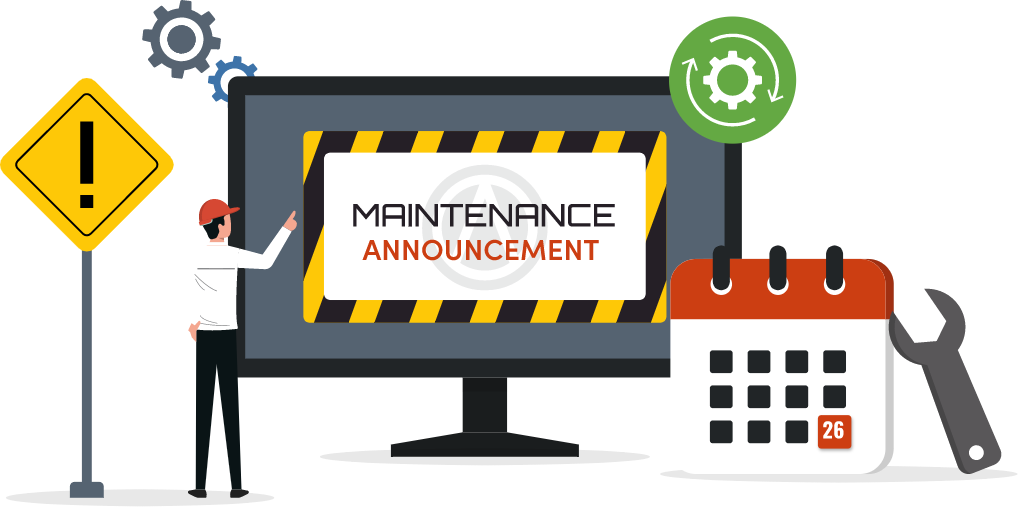What should be included in a structured on-boarding program?
A comprehensive program typically includes four phases - orientation, role-specific training, culture immersion, and evaluation. Each phase should have clear objectives, timelines, and measurable outcomes to ensure employees progress effectively.
Creating a Hospitality On-Boarding Program That Reflects Your Brand
Overview
In hospitality, every employee interaction shapes the guest experience. From the first smile at check-in to the final farewell at checkout, your staff is the living embodiment of your brand. A well-designed on-boarding program ensures new team members not only understand their responsibilities but also internalize the values and service standards that define your business.
Research shows that employees who feel connected to their company's culture early on are more engaged, perform better, and stay longer. For hospitality businesses, this translates directly into consistent guest experiences, smoother operations, and ultimately, higher satisfaction scores. On-boarding isn't just a procedural step - it's the foundation for building a team that represents your brand authentically and consistently.
By aligning your on-boarding program with your brand, you can turn new hires into confident, competent, and guest-focused ambassadors from day one.
Define Core Values and Service Standards

Before designing an on-boarding program, it's crucial to clearly define your brand. In hospitality, your brand is not just a logo or slogan - it's the guest experience delivered by every employee interaction. From the front-desk greeting to the final check-out, every touch-point represents your brand. Without a clear understanding of your brand values, new employees may make inconsistent decisions, which can affect service quality and guest satisfaction.
Start by identifying your core values and service principles. Ask - "What guest experience do we want to create?" and "Which behaviors reflect our brand?" These statements should be specific and actionable, rather than vague ideals. For example, "We provide warm, personalized service at every touch-point" is more effective than "We care about our guests."
Next, translate these values into operational standards. These are the practical behaviors that make your brand tangible, such as greeting every guest promptly, keeping spaces clean and organized, or following a clear procedure for resolving complaints. Documenting these standards ensures everyone shares the same expectations.
It's equally important to communicate your values in a way that resonates. People retain lessons better when they understand the why behind the rules. Using examples, storytelling, or simple demonstrations can help new hires internalize your brand. Studies show that employees who connect personally with company values are up to 4.5 times more engaged and motivated.
By starting your on-boarding program with a strong foundation of brand understanding, employees gain clarity on expectations, feel part of the brand, and are better equipped to deliver consistent, high-quality guest experiences.
Aligning On-Boarding Objectives with Business Goals
Effective on-boarding in hospitality isn't just about teaching tasks - it's about connecting new employees to the bigger picture. Every training activity should serve a clear purpose that aligns with both the company's operational goals and brand promise. When new hires understand how their role contributes to overall business objectives, they are more engaged, motivated, and capable of delivering consistent guest experiences.
Start by identifying measurable business goals that your on-boarding program can directly influence. Examples include reducing guest complaints, improving service speed, maintaining hygiene and safety standards, or increasing guest satisfaction scores. Once these goals are established, design training modules that give employees the skills, knowledge, and confidence to support them. For instance, if one goal is to reduce check-in wait times, the on-boarding program should include efficient front-desk procedures, proper use of property management systems, and clear communication protocols.
It's also important to establish performance metrics for new hires during the on-boarding period. This can include task completion rates, adherence to service standards, or early guest feedback scores. Tracking these metrics not only ensures alignment with business goals but also identifies areas where additional support or training may be needed.
Beyond skills and tasks, make sure employees understand how their role impacts guest perception and brand consistency. For example, housekeeping staff who understand that timely, spotless room preparation directly affects guest satisfaction are more likely to perform at a higher standard. Front-line employees who see the connection between personalized service and repeat bookings will take ownership of guest interactions.
By designing on-boarding objectives that tie directly to business goals, you create a program that is practical, measurable, and meaningful. New hires not only learn what to do but also why it matters, helping them deliver performance that supports operational excellence and reinforces your hospitality brand from day one.
Designing a Structured On-Boarding Program
A well-structured on-boarding program is essential for aligning new employees with your hospitality brand. Without clear steps, employees may feel uncertain, which can lead to inconsistent service and reduced confidence. A structured program ensures that employees progress logically from understanding the brand to mastering role-specific responsibilities while experiencing the company culture.
1. Break the Program into Phases
Divide the program into orientation, role-specific training, culture immersion, and evaluation. Orientation introduces the company's mission, values, and operational philosophy. Role-specific training equips employees with the practical skills required for their daily responsibilities, such as operating a POS system, managing reservations, or maintaining guest areas. Culture immersion allows employees to experience the company's values in action, reinforcing guest service expectations. Evaluation assesses understanding, provides feedback, and identifies areas needing additional support.
2. Balance Timing and Pacing
Avoid overwhelming employees by compressing too much content into a single day. Conversely, spreading training too thin can delay proficiency. Use a balanced approach that ensures information is absorbed and applied effectively. Mix interactive methods - hands-on practice, demonstrations, and role-playing - with written or digital materials to cater to different learning styles.
3. Clarify Expectations at Every Stage
Employees should know what they are learning, why it matters, and how it connects to business and brand goals. Document each step with checklists, timelines, and expected outcomes to maintain consistency across trainers, shifts, and locations. This reduces miscommunication and ensures all employees receive the same guidance.
4. Provide Measurable Progress Markers
A structured program allows managers to track employee progress, assess skill development, and make improvements as needed. Clear milestones make it easier to identify gaps and reinforce training where necessary, ensuring employees are fully prepared to deliver a consistent guest experience.
By following these four steps, your on-boarding program sets employees up for success from day one, building confidence, competence, and alignment with your hospitality brand.
Training for Brand Standards and Operational Consistency

Ensuring that new employees meet brand standards and maintain operational consistency is a cornerstone of hospitality on-boarding. Guests notice even small inconsistencies in service, cleanliness, or efficiency, which can affect satisfaction and brand perception. Structured training helps employees understand expectations and deliver consistent, high-quality experiences.
1. Document Operational Standards Clearly
Begin by translating brand values into actionable procedures. This includes greeting guests in a specific way, following hygiene protocols, maintaining room readiness, or adhering to check-in and check-out procedures. Clear, step-by-step instructions reduce errors and provide employees with a solid reference point for their daily responsibilities.
2. Emphasize Hands-On Training
Practical experience is critical. Role-playing guest interactions, simulating service scenarios, and supervised practice allow employees to learn standards in real-time and receive immediate feedback. Hands-on training also reinforces the connection between operational tasks and the brand's core values, making consistency more intuitive.
3. Reinforce Standards Through Measurement
Consistency depends on ongoing reinforcement. Use tools like checklists, daily briefings, and performance evaluations to track adherence. Metrics such as timeliness of service, error rates, and guest feedback scores help identify areas needing improvement, creating accountability while highlighting progress.
4. Explain the "Why" Behind Standards
Employees perform better when they understand the reasoning behind procedures. Linking operational standards to guest satisfaction, repeat business, and brand reputation motivates employees to internalize practices, rather than following them mechanically.
By focusing on these four steps, your training program ensures that employees deliver consistent, brand-aligned service, reinforcing your hospitality brand and creating memorable guest experiences from day one.
Instilling a Guest-Centric Mindset
In hospitality, service quality is directly tied to how employees perceive and prioritize the guest experience. Training new hires to be guest-centric ensures that every interaction reinforces your brand and creates a positive impression that drives repeat business. A guest-centric mindset goes beyond completing tasks; it involves anticipating needs, personalizing service, and responding with empathy and efficiency.
Begin by communicating the importance of the guest experience within your on-boarding program. Employees should understand that their actions, even small ones, affect customer perception and brand reputation. Use concrete examples to illustrate how attention to detail - such as remembering guest preferences or promptly addressing concerns - can significantly enhance satisfaction. When employees see the direct impact of their work, they are more likely to take ownership and deliver exceptional service consistently.
Next, train for empathy, communication, and problem-solving skills. Role-playing scenarios, guided interactions, and structured feedback sessions allow employees to practice handling common situations, from resolving complaints to exceeding expectations. Encourage reflection by asking employees how a guest might feel in a given scenario and what steps would make the experience better. This reinforces emotional intelligence, which is critical for guest-centric service.
In addition, provide measurable benchmarks to track guest-centric behavior. Metrics such as guest satisfaction scores, repeat bookings, or service error rates can help employees understand where they excel and where improvement is needed. Regular feedback, combined with recognition for positive guest interactions, reinforces the mindset and motivates continuous improvement.
Finally, lead by example. Managers and senior staff should model guest-centric behavior, demonstrating empathy, professionalism, and attentiveness. New employees are far more likely to adopt these behaviors when they see them consistently in practice. By intentionally instilling a guest-focused mindset, your on-boarding program ensures employees contribute to memorable, brand-aligned experiences that strengthen customer loyalty and satisfaction.
Feedback Loops and Continuous Improvement
On-boarding is most effective when it is treated as an ongoing process supported by structured feedback and continuous improvement. Without these feedback loops, employees may adopt inconsistent practices or fail to fully internalize brand standards. Implementing a system for feedback ensures that new hires feel supported, understand expectations, and continuously improve their performance.
1. Collect Feedback from New Employees
Ask employees about their on-boarding experience, including which parts were clear, which felt overwhelming, and where additional guidance is needed. Employee insights highlight gaps in training materials and opportunities to improve hands-on exercises, making the program more effective and approachable.
2. Incorporate Performance-Related Feedback
Use measurable indicators such as task completion rates, adherence to operational standards, service errors, and guest feedback scores. Reviewing these metrics allows managers to identify areas for improvement and provide specific, actionable guidance. Timely feedback encourages accountability and accelerates learning.
3. Foster a Culture of Continuous Improvement
Encourage employees to share ideas for enhancing workflows, service protocols, or guest interactions. Recognizing and acting on employee suggestions increases engagement and helps the on-boarding program evolve in line with operational needs and brand values.
4. Iterate and Update the Program Regularly
Use insights from both employee and performance feedback to refine training modules, checklists, and procedures. Continuous iteration ensures the on-boarding program remains aligned with evolving operational standards, guest expectations, and industry trends.
By following these four steps, your on-boarding program creates a cycle of continuous improvement that strengthens employee confidence, reinforces brand standards, and ensures consistent, high-quality guest experiences.
Making On-Boarding an Investment in Your Brand
On-boarding is more than an administrative step - it is a strategic investment in your hospitality brand. Every new hire who enters your business has the potential to either reinforce or dilute your guest experience. By defining your brand values, aligning on-boarding objectives with business goals, providing structured training, instilling a guest-centric mindset, and incorporating feedback loops, you ensure that employees not only perform their duties effectively but also become ambassadors of your brand from day one.
Investing in a thoughtful, data-driven on-boarding program pays dividends in employee engagement, retention, operational consistency, and guest satisfaction. Employees who understand your brand and feel empowered in their roles are more confident, productive, and capable of delivering memorable experiences. Hospitality business owners who prioritize brand-aligned on-boarding create teams that consistently meet guest expectations and strengthen long-term loyalty.
To make this process more efficient and measurable, consider leveraging technology. Platforms like Altametrics streamline on-boarding by providing centralized training resources, progress tracking, and performance analytics, all tailored to your hospitality business. Altametrics helps you ensure every new hire experiences a structured, consistent, and brand-aligned on-boarding journey, giving managers the insights they need to support employees effectively.
To learn more about Altametrics, click on "Request a Demo" below,
Must-Read Content

How to Use Technology to Streamline Your Restaurant's On-Boarding Process


New Employee Onboarding Checklist for Restaurant Owners











